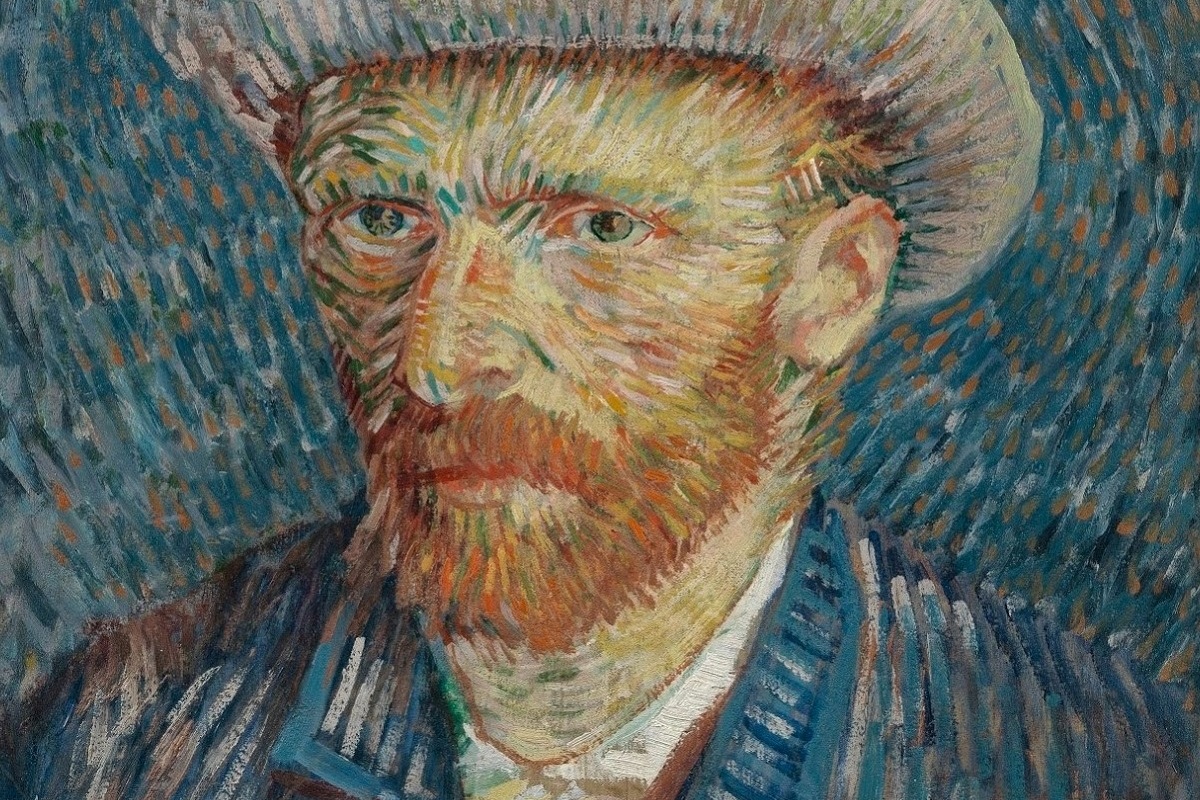When we hear Vincent van Gogh’s name, many of us think of an eccentric genius who created works of unparalleled beauty with vivid colors and bold brushstrokes. Some of us also know that the artist suffered from bouts of intense depression, that he cut off his left ear in a fit of rage, and that he died from what is assumed to be from a self-inflicted gunshot wound. What we may not know is that van Gogh was a deeply spiritual man.
Vincent van Gogh was born in Groot-Zundert in the Netherlands on 30 March 1853. He was the son of Theodorus van Gogh, who was a pastor of the Dutch Reformed Church. Young Vincent followed in his father’s footsteps, joining the Church as a pastor. When the Church rejected van Gogh for failing to master Biblical Greek, he became a missionary at the Belgian Missionary Society, serving coal miners in Belgium.
During this time, van Gogh pursued his calling as a missionary with single-minded devotion. He was so deeply moved by the poverty of the coal miners that he gave all his clothes and possessions to them. When a representative from the Belgian Missionary Society paid van Gogh a visit, he concluded that van Gogh’s impoverished lifestyle bordered on the scandalous. He then proceeded to report van Gogh’s behavior to the church authorities.
Although van Gogh was successful as a missionary with the Belgian miners, the church authorities rejected him upon receiving the formal report that he lived like the poor. Upon rejection by the Church, van Gogh quit his job as a missionary. Although van Gogh was embittered with the lack of compassion by organized religion, he did not abandon God. He wrote, “I think it is a splendid saying of Victor Hugo’s ‘Religions pass away, but God remains.’” Van Gogh’s decision to separate himself from the institutional church was not just a passing phase. It was something that would last his entire life.
Van Gogh, who had chosen Christ’s path to serve the underserved, considered it morally wrong to live in affluence while ministering to poor coal miners in Belgium. When the church stopped his funding, he was forced to leave the coal mines and looked for another source of livelihood. He went to his brother, Theo van Gogh, who was a successful art dealer in Paris, seeking his help. Theo funded Vincent for the remainder of his life in exchange for his paintings.
The schism between organized Christian religion and van Gogh remained, prompting him to search for a Christian faith with others who, like him, were disenchanted with the Church. Van Gogh became convinced that the Church had destroyed the social and moral fabric of Western civilization. He was very vocal in his criticism of the Church for promoting repression and questionable beliefs instead of cultivating compassion and reverence for truth.
Van Gogh was horrified to find Christian white men brutalizing and annihilating native populations all over the world. He excoriated the Church for contributing to the intolerance that Europeans engaged in with their interactions of people from other cultures. Van Gogh believed that the ultimate salvation of Western culture depended on the regeneration of religious sensibilities based on humanistic principles that discouraged blindly following religious dogmas and rituals and, instead, promoted beliefs that all religions contain eternal truths.
Van Gogh was profoundly influenced by the English philosopher and essayist, Thomas Carlyle’s philosophical novel, Sartor Resartus, which exhorted readers to discard the tatters of old religious ideas and acquire new “vestments” to clothe one’s religious and spiritual needs. Van Gogh was also moved by the spiritual writings of Leo Tolstoy. He commented that the Russian writer’s ideas about abandoning narrow and outworn conventions and embracing spirituality that supports a more meaningful outlook to life deeply resonated with him.
Like Tolstoy, van Gogh also practiced a spiritual life that was based on tolerance, which he believed was critically important in achieving social harmony as well as for individual well-being. Van Gogh’s spirituality drew him closer to the underdogs of society. He intensely felt the moral need to respect life. He wrote, “We are called on to preserve life, to respect life; this is our duty.”
According to van Gogh, respecting life was extremely important as he told one of his friends: “the existence or non-existence of mutual respect is of such importance to me that little else can be compared to it; nothing else is essential in the way that this spiritual unity is.” In keeping with his sense of empathy and compassion for the downtrodden, the earlier paintings of van Gogh of poor peasants and miners faithfully capture their poverty and, most importantly, their grim and blighted life, which was filled with work that was endless, dull, and repetitious with no sign of mitigation.
Although van Gogh effectively captured the suffering of poor people in his paintings, there was something redeeming in these portraits. According to van Gogh experts, these paintings lend an aura of spirituality because they reveal the courage and forbearance of the poor, very much in synch with the Bible’s teachings about pain and suffering in life with promise of redemption.
Although van Gogh suffered from the pangs of unrequited love, he still regarded love toward other fellow beings as something sublime and profound rather than mere sexual desire or sentimental attachment. He looked at love as a strong force that resides in all of us, allowing us to penetrate the external world and discover its mysteries and become unified with it.
He wrote to his brother Theo: “One must love with a lofty and serious and intimate sympathy, with strength, with intelligence and one must always try to know deeper, better, and more. That leads to God, that leads to unwavering faith.” Since he believed that God wanted us to change the world by reforming morals and by igniting the light and fire of eternal love, the attitude of institutionalized Christian religion toward the practice of love filled van Gogh with horror.
He wrote with much bitterness: “The clergymen call us sinners conceived and born in sin,bah! What dreadful nonsense that is. Is it a sin to love,to need love, not to be able to live without love? I think a life without love a sinful and immoral condition.” Van Gogh’s spirituality helped him to find oneness with nature. He wrote about the intense emotions he felt in his contact with nature, describing the sensations as loss of individual consciousness and merging with the infinite.
Whether van Gogh was painting stars, wheatfields, sunflowers and Irises, butterflies, or sunsets they all functioned as symbols of his spirituality and his source of spiritual fulfillment. Biographers of van Gogh claim that although he gave up on the Church, he kept his spiritual passion alive by rechanneling it into his art. According to scholars, he chose to express the divine as reflected in nature.
He painted olive groves to represent Christ and sunflowers as symbols of pious souls who follow God’s way to light. In his famous painting of the wheatfields, the sheaves of wheat, which seem to crumble into earth to regenerate life, represent the eternal cycle of death and rebirth. In a letter to his friend, Emile Bernard, van Gogh confessed “a longing for the Infinite, of which the sower and the sheaf are the symbols still enchanting me.” Butterflies, for van Gogh, seemed to represent spiritual transformation and possibly even immortality.
He often speculated about life after death and the possibility of being reborn on other stars. In van Gogh’s most popular work, Starry Night, one observes that God and His love are present abundantly. In Van Gogh: The Life, biographers Steven Naifeh and Gregory White Smith describe Starry Night as a “kaleidoscope of pulsating beacons, whirlpools of stars, radiant clouds, and a moon that shone as brightly as any sun ~ a fireworks of cosmic light and energy visible only in Vincent’s head.”
Although van Gogh suffered terribly from poverty, loneliness, depression, and severe health issues, he found strength in his belief that pain and suffering was functioning as spiritual enrichment and helped enhance his artistic powers.
Despite his anguish, most of his works represent God’s love and compassion. According to Naomi Margolis Maurer, author of The Pursuit of Spiritual Wisdom: The Thought and Art of Vincent van Gogh and Paul Gaughin, “He (Vincent) believed in a religion that teaches people to have reverence and awe of creation, and to have compassion and feelings of charity and sympathy toward people suffering. It was totally noninstitutional.”
(The writer is professor emeritus in the Communication Studies Department at Loyola Marymount University, Los Angeles)











